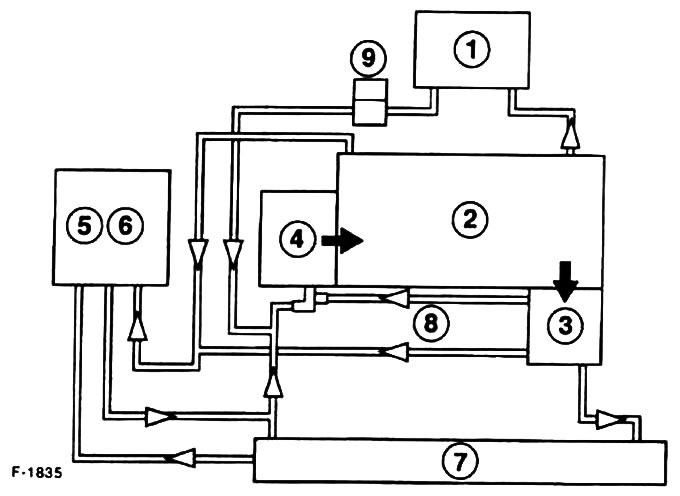The coolant circuit is thermostatically controlled. As long as the engine remains cold, coolant circulates only in the cylinder block, and the thermostat in the coolant system heat exchanger opens and forces coolant flow through the radiator. The coolant is driven by a coolant pump, which is driven by a V-belt in a 4-cylinder petrol engine and a camshaft timing belt in a diesel engine. The coolant passes through an aluminum radiator and is cooled by the air flow blowing over the radiator plates. Automatic transmission vehicles use a radiator to cool the transmission oil, located in the left radiator reservoir.
At high coolant temperatures, an electric fan provides additional coolant cooling. As soon as the temperature of the liquid exceeds 100°C, the electric fan turns on; in diesel engines this is done via a thermal switch, in gasoline engines the engine control unit switches on the fan via a relay. As soon as the coolant temperature drops, the fan turns off.
The compensation tank serves as a container for the coolant, collects the coolant that expands under the influence of heat and, after cooling, feeds it back into the circuit. As a result, this circuit is constantly filled and provides good cooling. Coolant can only be topped up through the expansion tank.
Attention! The electric fan may spontaneously turn on repeatedly when the engine is off, if the ignition is on. This inclusion is caused by the heat accumulated in the engine compartment. Therefore, if possible, turn off the ignition when working in the engine compartment.

Coolant circuit: 1 - Heat exchanger of the heating system; 2 - Engine; 3 - Thermostat housing; 4 - Coolant pump; 5 - Compensation tank for coolant; 6 - Threaded cover; 7 - Radiator; 8 - Bypass hose; 9 - Oil cooler
Visitor comments